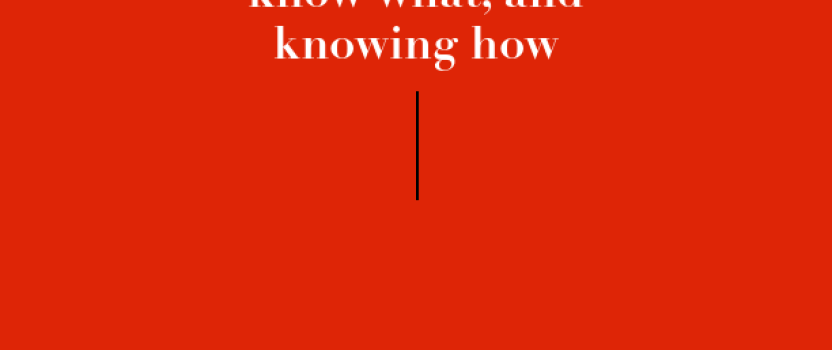Knowing who needs to know what, and knowing how
As so much of our communication moves into the electronic realm, how do we keep up with what’s polite, cool and useful?
I’m reminded of the convoluted (but true) concept of ‘known knowns’, ‘known unknowns’ and ‘unknown unknowns’.
Sorry, bear with me here…
Basically, we usually know that we know something (although sometimes we’re wrong). And we can choose to work on the things that we know we don’t know. But when we don’t know what we don’t know (i.e. the unknown unknowns), things can get tricky.
With new forms of communication, we are regularly visiting these unknown unknowns.
Take, for instance, the many group emails entering our inboxes every day, from teachers, parent coordinators, business contacts and community groups etc.
So often these (expansive!) emails are sent as CC (i.e. carbon copy where everyone can see everyone else) rather than BCC (i.e. blind carbon copy where you simply receive the email but don’t see who else is on the list).
This is usually an innocent mistake by people who simply don’t know (i.e. an unknown unknown). But it can cause all sorts of problems.
Firstly, everyone on the email list now knows the email address of everyone else on the list (which is not cool).
Secondly, your readers often have to scroll down for two or three pages before they even get to the actual message. By which time they may well have given up.
Remember posting letters? Even if we were sending the letter to lots of people, we only wrote the one address on the front of each envelope.
Well, that was basically the equivalent of using the BCC (blind carbon copy) feature.
Sending emails as CC (carbon copy) also leads to another frustrating problem: it encourages people to reply-all.
When deciding to reply or reply-all, simply ask yourself ‘does everyone really need to know what I’m saying’. Do they all need to know that I’ll be 5 minutes late for the meeting, or that little Max has lost his permission note?
Unnecessarily replying-all is a fantastic way to really annoy everyone on the mailing list! As their in boxes fill up with meaningless detail, they’ll most likely stop reading the emails altogether. And curse the original sender for not using BCC.
And it’s not just with email where this can happen. We also need to be careful with social media.
An inadvertent tick of a group list on Facebook or LinkedIn could generate a barrage of emails flying into various people’s inboxes. Obviously this can be irritating for users. But, more seriously, it can decrease your credibility and damage your brand. And once people start asking why they are even on the list, it can be downright embarrassing.
So how do you avoid these mistakes?
Always ask yourself ‘who needs to know this?’ (Information overload is a real problem and people will be grateful whenever you protect them from unnecessary information.)
Think about people’s privacy. Do they really want to share this information with everyone else?
Make sure you understand who will receive your messages (i.e. BCC, CC, Reply, Reply-all).
Test out these features on friends and family so you understand how they work.
If you’re unsure how to use social media and electronic communication, don’t be afraid to get professional help. Brand damage can be costly!
Check that your staff members understand these issues because usually these mistakes are completely innocent (remember, those unknown unknowns?).
OK… so, now, time to fess up:
What has been your social media faux pas?
How did you fix it?
Did anything good come of it?




